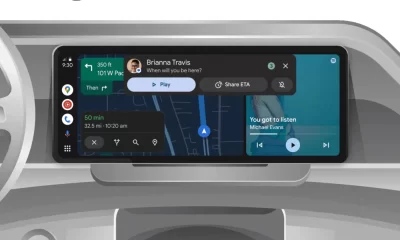Google’s Pixel 9 Tensor G4: Real-world performance over benchmarks
Top 3 Key Points:
- Real-World Focus: Google’s Tensor G4 is designed for everyday improvements, not for outperforming benchmarks.
- AI Optimization: Tensor G4 enhances AI capabilities, making the Pixel 9 smarter and more efficient.
- Improved Modem: The new Exynos 5400 modem boosts power efficiency and enables features like Satellite SOS.
Google’s decision to switch to its Tensor chips for the Pixel series has generally been well-received, though not without criticism. One of the main complaints has been that these chips don’t perform as well in benchmark tests compared to competitors like Qualcomm’s Snapdragon. With the upcoming Tensor G4 chip in the Pixel 9, Google continues to prioritize real-world performance over benchmark scores.
Back in 2021, Google introduced the first Tensor chip with the Pixel 6, moving away from Qualcomm’s Snapdragon chips. The primary reason for this shift was to create a chip tailored specifically to Google’s vision for the Pixel, focusing on AI advancements and a more integrated user experience. This commitment has only deepened in 2024 with the development of the Tensor G4.
While the Tensor G4 might still lag in benchmark comparisons with the latest Snapdragon chips, Google is more concerned with practical improvements that users will feel daily. At the recent Made by Google event, the company described the Tensor G4 as its “fastest and most efficient” chip yet, emphasizing that it’s built to enhance everyday activities like browsing, streaming, and photography, all while being more battery-friendly.
In an interview with the Financial Express, Soniya Jobanputra from Google reiterated this approach, stating that the chip isn’t designed to chase benchmark records but to serve Google’s specific use cases. For instance, the Tensor G4 has been optimized to handle multiple tasks simultaneously and to improve the speed at which apps open, addressing common frustrations users face.
AI remains a central focus for the Tensor G4. Google’s Tensor team collaborated with DeepMind to fine-tune the chip not just for current AI needs but for future advancements. This includes boosting the chip’s memory bandwidth to support AI models like Gemini Nano on the Pixel 9. According to Google, Tensor G4 is three times more powerful in on-device AI processing than the Pixel 8 Pro, allowing it to handle up to 45 tokens per second.
Another key improvement in the Pixel 9 is the new Exynos 5400 modem, which enhances power efficiency and enables features like Satellite SOS, adding another layer of reliability to the device.
Although Google hasn’t shared all the specifics about the Tensor G4, it’s clear that the company’s focus remains consistent: creating a chip that aligns with Google’s goals for the Pixel series. Looking ahead, there’s anticipation around what the Tensor G5 will bring. Reports suggest it might be Google’s first fully custom-designed chip, potentially marking a significant leap in performance and efficiency.
For now, the Pixel 9 series, equipped with the Tensor G4, is available for pre-order, offering users a device optimized for real-world use rather than just numbers on a chart.
Google Meet gets a fresh new look with Material 3 design

Google Meet is getting a big update to its look, thanks to the new Material 3 design. This change brings a cleaner and more modern style to the video calling app, making it easier and more enjoyable to use.
With Material 3, Google Meet now has rounder buttons, softer colors, and better spacing between elements. The main controls, like the microphone, camera, and end call buttons, are now larger and easier to tap. The icons and text are also clearer, which helps users find what they need quickly during a call.
Another improvement is the new “expressive” color system. This feature lets the app’s colors match your device’s wallpaper or theme, giving each user a unique and personalized experience. The changes also make Google Meet more accessible, as the new design is easier to read and use for everyone, including people with vision difficulties.
These updates are rolling out to both web and mobile versions of Google Meet. Google says the new look will help people feel more comfortable and focused during their meetings. Overall, the Material 3 update makes Google Meet not only look better but also work better for all its users.
Android
Easy ways to change Android Auto’s look with light and dark themes

Android Auto is a helpful tool that lets you use your phone’s apps safely while driving. It connects your phone to your car’s screen, making it easier to use maps, music, and calls. One of the features many people like is the ability to change how Android Auto looks by switching between light and dark themes.
How to switch between light and dark themes
Android Auto offers two main themes: light and dark. The light theme uses brighter colors, which can make the screen easier to see during the day. The dark theme uses darker colors, which can be more comfortable for your eyes at night or in low light.
To change the theme, follow these steps:
- Open the Android Auto app on your phone.
- Go to the settings menu.
- Find the “Theme” option.
- Choose between “Light,” “Dark,” or “Set by car” (this lets your car decide the theme based on the time of day or your car’s settings).
Why themes matter
Using the right theme can make driving safer and more comfortable. The light theme is good for bright days, while the dark theme helps reduce glare at night. Having these options means you can pick what works best for you, making Android Auto easier to use in any condition.
In short, Android Auto’s theme options are simple to use and help you drive more safely by making the screen easy to see, no matter the time of day.
Google Drive and Files by Google get fresh updates for easier use

Google is rolling out some helpful updates to two of its popular apps: Google Drive and Files by Google. These changes are designed to make managing your files and watching videos much smoother.
First, Google Drive is getting a new video player. Now, when you upload a video to Drive and open it, you’ll notice a fresh look that matches Google’s latest design style. The controls, like play and pause, are easier to use and look cleaner. This update makes it simpler to watch videos directly in Drive without needing to download them first.
Meanwhile, the Files by Google app is also getting a makeover. The app is adopting Google’s Material 3 design, which means it looks brighter and more modern. The buttons and menus are easier to see and use, making it simpler to find, move, and organize your files. There are also new color options and improved icons, so everything feels more user-friendly.
Both updates show Google’s commitment to making its apps more helpful and enjoyable to use. Whether you’re watching videos in Drive or sorting files on your phone, these changes aim to save you time and make things less complicated. If you use these apps, keep an eye out for these new features—they should arrive soon!
-

 Apps1 year ago
Apps1 year agoGboard Proofread feature will support selected text
-

 News1 year ago
News1 year agoSamsung USA crafting One UI 6.1.1
-

 Apps1 year ago
Apps1 year agoGoogle Contacts app testing new Besties Widget
-

 AI12 months ago
AI12 months agoGoogle Pixel 9 Pro may come with a complimentary one-year Gemini Advanced subscription
-

 Apps12 months ago
Apps12 months agoGoogle working on a new video editing feature for its Photo app
-

 Apps12 months ago
Apps12 months agoGoogle Maps lets you report traffic jams and accidents on Apple CarPlay, but not on Android Auto
-

 News1 year ago
News1 year agoBreaking: Samsung Galaxy S22 may get Galaxy AI features
-

 Apps1 year ago
Apps1 year agoGoogle Messages app will transform MMS chats into RCS










